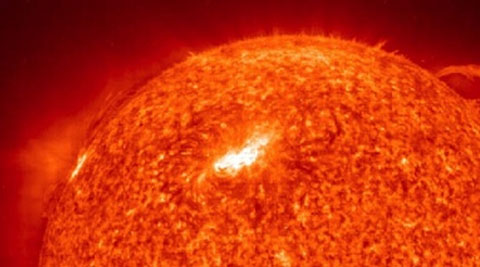Sen—A team of researchers has identified for the first time a star directly related to the Sun, one almost certainly born from the same cloud of gas and dust.
The find, led by astronomer Ivan Ramirez of The University of Texas, will help astronomers look for other solar siblings. It could lead to an understanding of how and where our Sun formed, and how our Solar System became hospitable for life.
“We want to know where we were born,” Ramirez said.
“If we can figure out in what part of the galaxy the Sun formed, we can constrain conditions on the early solar system. That could help us understand why we are here,” said Ramirez.
Additionally, there is a chance, “small, but not zero,” that these solar sibling stars could host planets that harbor life, Ramirez said.
“In their earliest days within their birth cluster, collisions could have knocked chunks off the planets, and these fragments could have travelled between solar systems, and perhaps even may have been responsible for bringing primitive life to Earth,” he said.
“So it could be argued that solar siblings are key candidates in the search for extraterrestrial life,” Ramirez said.
The newly identified star is not visible to the unaided eye but can be easily seen with low-power binoculars, not far from the bright star Vega.
The team identified HD 162826 as our Sun’s sibling by following up on 30 possible candidates found by several groups around the world looking for solar siblings.
Researchers studied 23 of these stars in depth with the Harlan J Smith Telescope at McDonald Observatory, and the remaining stars with the Clay Magellan Telescope at Las Campanas Observatory in Chile.
The team also included information about the stars’ orbits – where they had been and where they are going in their paths around the centre of the Milky Way galaxy.
Considering both chemistry and orbits narrowed the field of candidates down to one: HD 162826.
No one knows whether this star hosts any life-bearing planets, researchers said.
Studies have ruled out any massive planets orbiting close to the star (so-called hot Jupiters), and indicate that it’s unlikely that a Jupiter analog orbits the star. The studies do not rule out the presence of smaller terrestrial planets.
Agencies/Canadajournal
 Canada Journal – News of the World Articles and videos to bring you the biggest Canadian news stories from across the country every day
Canada Journal – News of the World Articles and videos to bring you the biggest Canadian news stories from across the country every day



